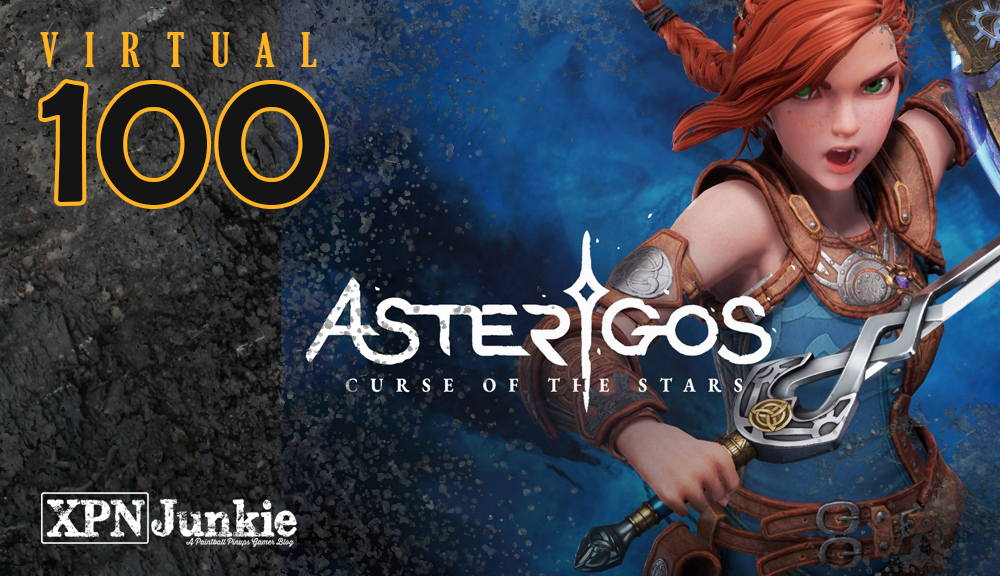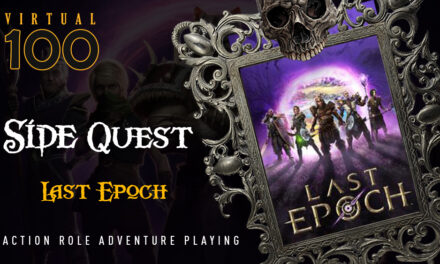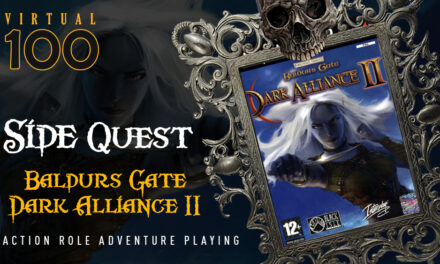The Virtual 100 – Game 2
Asterigos is not what I imagined it would be. Visually, it looked like a knockoff of Immortals: Fenix Rising. But the description made it sound more like a Legend of Zelda clone. But the gameplay leaned more towards a souls-like.
The result of this kind of a mish-mash is that Asterigos felt like a game that didn’t really know what it wanted to be. And a lot of times, I couldn’t even decide if I was enjoying myself.
Which is a shame, honestly, because I had my eye on Aterigos from the get-go. From the earliest previews, it intrigued me. I wasn’t ready to bite on it at full price; I just didn’t know enough about it. But it looked cool, and when I saw it on sale, I took advantage.
I’m not really sure what I was expecting the game to be. At worst, I thought it would be a shallow hack ‘n slash (which I’m fine with, by the way) and at best it would be a Zelda clone that ticked off all the boxes that the current Zeldas have abandoned. What I got was a world design and combat style heavy on dodges and parries and a “bonfire” system that would reset enemies if you rested. If I had to compare the game to anything, I would say it reminded me most of Darksiders III, but without the loot.
Asterigos got off to a decent start. The opening level was a good setup, and the first real “level” that you go through had some interesting shortcuts and loops, but the entire thing felt very convoluted, which was further exasperated by the lack of a map. It wasn’t too bad though, at first, because the areas were tight and somewhat linear. The cobbled-together shacks and walls limited the possible directions you could go; there was really only two choices, and one of them would usually connect back to an earlier area anyway. The cumbersome design didn’t really start to rear its head until later in the level, when there were multiple paths that looped back and only one that truly went forward. With no map to refer to, it made for some frustratingly aimless wandering until I found that one path that I had led me forward. The developers added a small signpost in the form of a blue symbol painted on rocks or walls that pointed the way forward. This was fine and all, but when the areas start to get a bit larger, the signpost isn’t always noticeable, and leads to aforementioned wandering until you happen across it.
The Aphis Bazaar took this frustration and multiplied it x10, as the areas were no longer small, tight areas with all routes visible at once, and instead opened up into large, empty streets and alleys, with multiple routes and loops. One could literally be running around in circles for an hour or two simply because they keep missing a ladder propped up in a corner of a plaza. It was a problem that had an aggravatingly simple solution: A map. Why the developers chose not to include one is beyond me. I really do think my opinion of the game would have been much different without the added frustration that stemmed from my wandering around for hours wondering where I was supposed to go.
Areas are linked together, and there is a fast-travel system in place. The problem is, that fast-travel system doesn’t become available right away, and while you can use items to teleport back to the “base,” you still have to hoof it back to where you were, unless you have a rare usable item that lets you go back. Remembering where you were and how you got there is a memory exercise for the ages. Going back to sell items and upgrade your gear gets to be a task that will have you questioning how badly you need it.
I realize this is a huge characteristic of a Souls-like. But the thing is, the Souls games are famous for their level design, which is usually top=notch. The player almost always knows how to get somewhere, and the fun is in the exploration and discovering secret areas and shortcuts. This game doesn’t have that. The exploration is in trying to find your way forward, and finding the shortcuts by accident. Rarely is there anything to discover off the beaten path, with the exception of a hidden chest, which doesn’t really offer anything of note aside from some extra starlight, and adding to a battle-pass style tier system that rewards you for finding chests. It’s odd that the rewards for finding the chests are more lucrative than what’s in the chests themselves.
I tried to play the game as long as possible without the aid of the internet. I wanted to get through it on my own, but the vague quest descriptions and complete lack of direction eventually broke me. Every so often I’d accidentally wander in the correct direction and actually drive the story forward, but more often I’d be circling an area, literally circling through paths that wrapped back around on themselves, looking for a quest item with literally no clue as to where it might be. It added hours— I’m not exaggerating— actual hours to my play time. The aimless wandering in this game is ridiculous. And this is coming from someone who enjoys adventure games and the exploration they include. But there’s a difference between exploring and running through the same areas ad-infinitum because you know there’s a way to access a ledge somewhere, you just can’t find it. There was one side quest in particular where I had to find three keys. I found the first two fairly quickly, and then wandered for no less than three play sessions, endlessly searching for the third key. During this time, I made absolutely no progress in the story, and it was irritating to say the least.
As if navigating the areas wasn’t tedious enough, there are, of course, a myriad of enemies to contend with. Most of them are fodder, they’ll be done by the time you finish your combo, but some of them pack a punch, and it doesn’t seem to matter what your level is. I could sleep my way through the majority of an area, only for one monster in particular to hand me my ass in a basket. 90% of that ass-kicking is from complacency, both from the other enemies being pushovers and in the mind-numbing wandering that checks your brain out. It’s real hard to be careful when you’ve been through an area fifteen times in the past few hours.
The final boss is probably one of the most bullshit bosses I’ve encountered in a long time. Not only because he throws everything and the kitchen sink out you, but his attacks pack a punch, and if Hilda is hit by one that stuns her, there’s a good chance it’s over. He moves around so much, it’s difficult to get in a melee attack, and if you haven’t updated the staff, like I didn’t, getting hits on him was an exercise in frustration. It took many, many attempts and a monumental test of willpower to keep from throwing my controller, but I finally put an end to him and watched the cutscene play out.
I’m assuming there are multiple variations to the ending depending on which choices were made during the quest, but for the most part it wrapped itself up in a neat little bow. I still don’t really even know what the curse was or what I was supposed to prevent. It seemed as though the downfall of the city was one of its own creation, most of the enemies and problems seemed to stem from their own society. I don’t know. I’d be lying if I said I understood half of what was going on.
But alas, it’s finally done, and it was an average experience at best. I’m not really even sure what about this game got me to stick with it. Maybe it was the visual style or the mythology. I don’t know. Maybe it was my own determination to see it through. I was angry more than I was happy, and it was uninstalled immediately upon completion.
But it gets to be the second game on the Virtual 100 grid, and that’s another ten bucks in the piggy bank.





